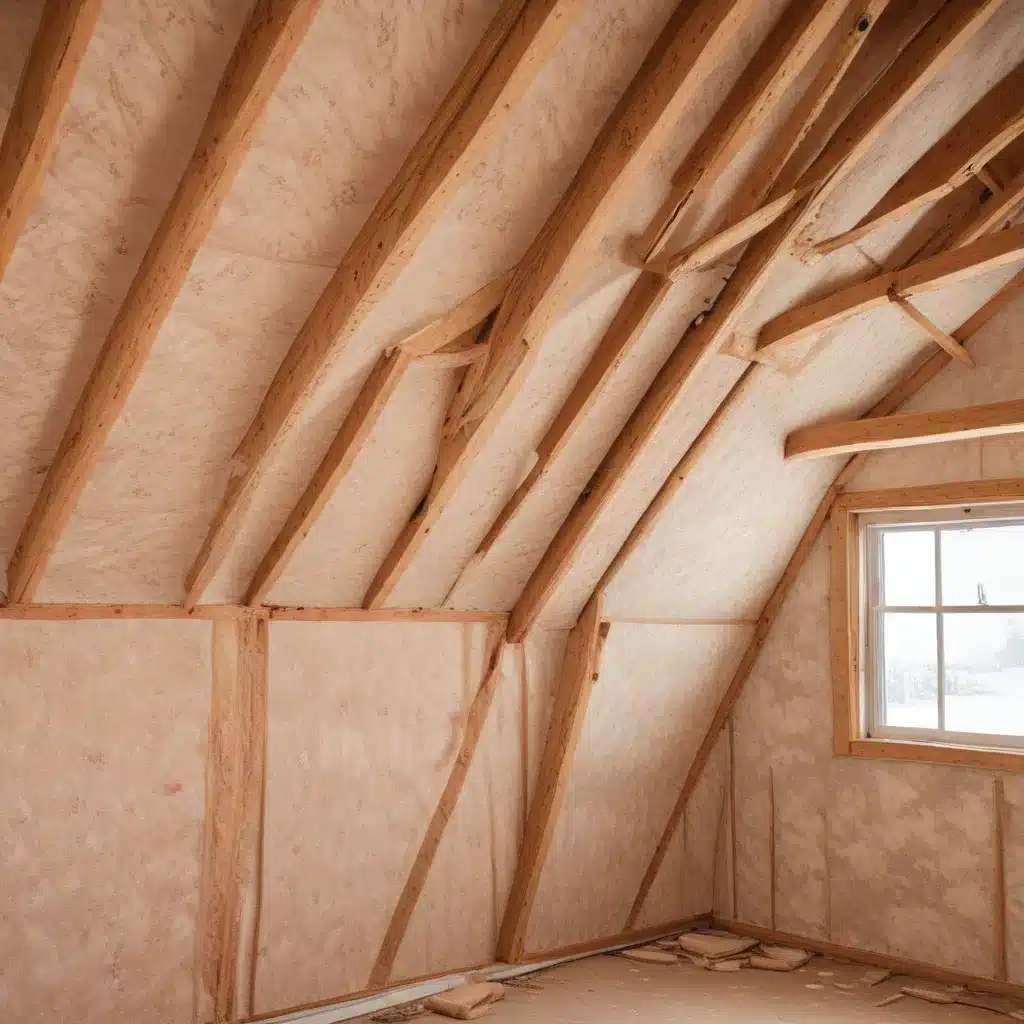
As a seasoned construction professional and interior designer, I’ve seen firsthand how crucial insulation can be in maintaining a comfortable and energy-efficient home throughout the year. Whether you’re battling the scorching summer heat or the biting winter chill, optimizing your home’s insulation is key to keeping your living spaces comfortable while minimizing your energy costs.
Understanding the Role of Insulation
Insulation acts as a barrier, trapping heat or cool air inside your home and preventing it from escaping. During the summer, a well-insulated home helps to keep the hot outdoor air from infiltrating, reducing the strain on your air conditioning system. Conversely, in the winter, insulation retains the warmth generated by your heating system, allowing you to stay cozy and toasty without wasting energy.
Proper insulation is a crucial component of any high-performance building envelope. By strategically installing the right type and amount of insulation, you can create a more comfortable and sustainable living environment that adapts seamlessly to seasonal changes.
Assessing Your Home’s Insulation Needs
Before diving into insulation optimization, it’s important to understand the current state of your home’s insulation. Consider the following factors:
- Age of the Home: Older homes may have outdated or insufficient insulation, which can significantly impact energy efficiency.
- Climate and Regional Considerations: The optimal insulation levels and materials can vary depending on your local climate and weather patterns.
- Home Design and Layout: The size, shape, and construction materials of your home can influence the insulation requirements.
- Existing Insulation Type and R-Value: The R-value, which measures the insulation’s resistance to heat flow, will determine its effectiveness.
By carefully evaluating these aspects, you can develop a targeted plan to enhance your home’s insulation and achieve optimal performance throughout the year.
Strategies for Insulation Optimization
-
Prioritize Attic Insulation: The attic is often the most significant source of heat gain or loss in a home. Ensure that your attic is adequately insulated, with a minimum of R-30 to R-60 insulation, depending on your local climate.
-
Insulate Exterior Walls: Exterior wall insulation is crucial for maintaining a comfortable indoor environment. Consider adding or upgrading the insulation in your walls, often with spray foam, blown-in, or batt insulation.
-
Seal Air Leaks: Identify and seal any gaps or cracks in your home’s envelope, including around windows, doors, electrical outlets, and plumbing penetrations. Air sealing can significantly improve the overall efficiency of your insulation.
-
Upgrade Insulation in Crawl Spaces and Basements: These areas are often overlooked but can contribute greatly to heat loss or gain. Ensure that your crawl spaces and basements are properly insulated to maintain a comfortable temperature throughout your home.
-
Utilize Reflective Insulation: Reflective insulation, such as radiant barriers or reflective foil, can help reduce heat transfer by reflecting radiant heat away from your living spaces.
-
Consider Insulation Materials: Explore different insulation materials, such as fiberglass, cellulose, or rigid foam, to find the best fit for your home’s specific needs and climate.
-
Optimize Insulation R-Values: Consult local building codes or work with a professional to determine the ideal R-values for your region, ensuring your insulation meets or exceeds the recommended standards.
-
Integrate with Ventilation and Airflow: Proper insulation works hand-in-hand with efficient ventilation and airflow to maintain a comfortable and healthy indoor environment.
-
Seek Professional Guidance: Collaborate with experienced construction professionals or energy efficiency experts to assess your home’s insulation needs and develop a comprehensive optimization plan.
By implementing these strategies, you can transform your home into a haven of comfort and energy efficiency, regardless of the season.
The Benefits of Optimized Insulation
Investing in insulation optimization offers a multitude of benefits for homeowners:
-
Enhanced Comfort: Properly insulated homes maintain a more consistent and comfortable temperature throughout the year, reducing the reliance on HVAC systems.
-
Energy Efficiency: Improved insulation can significantly reduce your home’s energy consumption, leading to lower utility bills and a smaller carbon footprint.
-
Improved Indoor Air Quality: Airtight construction and effective insulation can help prevent the infiltration of outdoor pollutants, allergens, and moisture, contributing to a healthier indoor environment.
-
Increased Home Value: Well-insulated homes are often more desirable to buyers, as they offer long-term energy savings and a more comfortable living experience.
-
Reduced Maintenance and Repair Costs: Properly insulated homes experience less stress on HVAC systems, which can lead to fewer breakdowns and extended equipment lifespan.
By optimizing your home’s insulation, you’re not only enhancing your personal comfort and saving on energy costs but also making a meaningful investment in the long-term value and sustainability of your property.
Conclusion
Navigating the ever-changing seasons can be a challenge, but with the right insulation strategies, you can create a home that adapts seamlessly to the fluctuating temperatures. By prioritizing attic insulation, sealing air leaks, and utilizing the most effective insulation materials, you can transform your living spaces into comfortable, energy-efficient havens.
Remember, the key to successful insulation optimization lies in understanding your home’s unique needs and working closely with experienced professionals. At Local Builder London, our team of construction experts and interior designers is dedicated to providing personalized guidance and practical solutions to help you achieve your energy efficiency and comfort goals.
Don’t let the seasonal changes disrupt your home’s comfort and stability. Embrace the power of optimized insulation and enjoy a year-round oasis of temperature control and energy savings.


